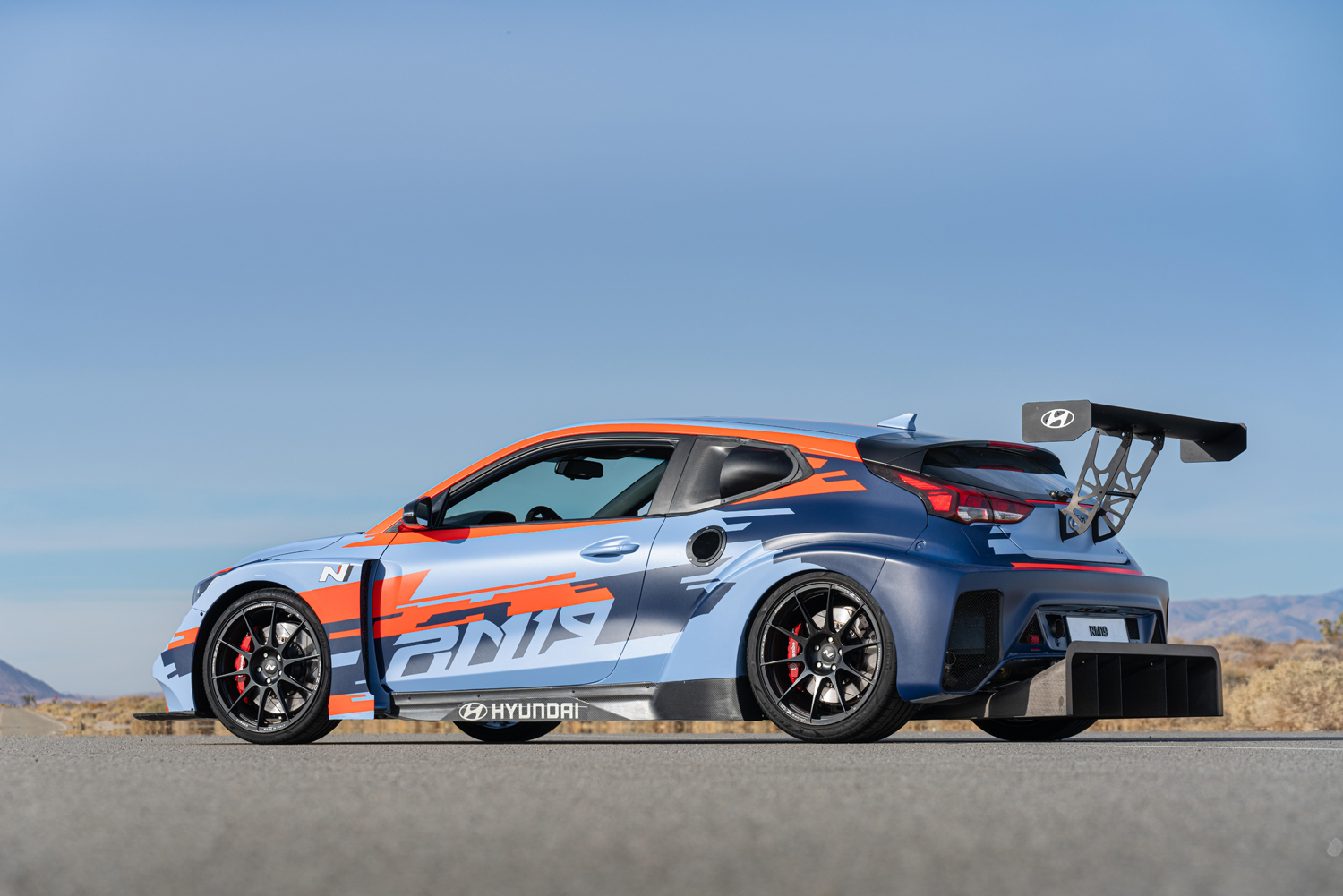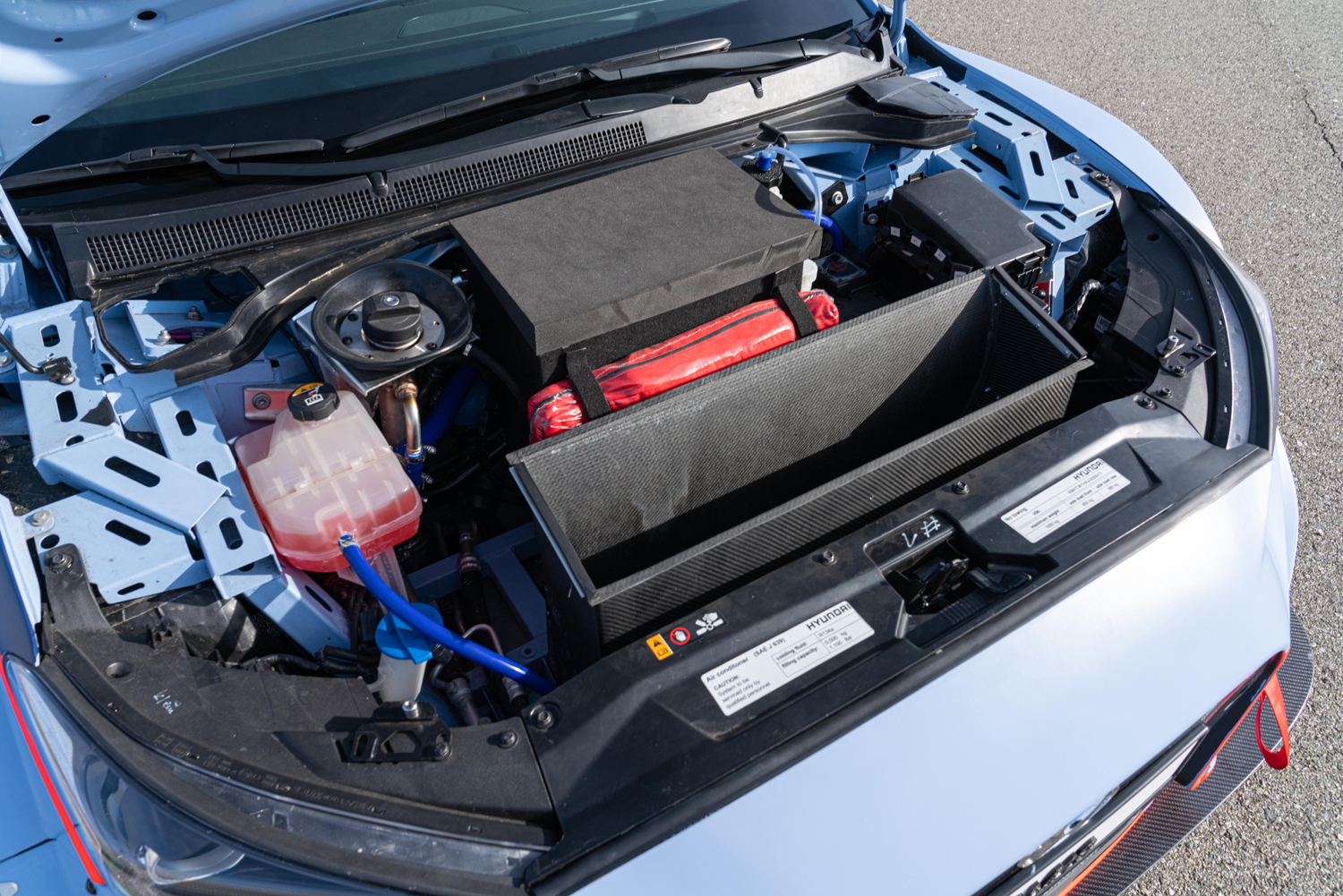Hyundai’s chorus of mid-engined concept cars has finally delivered its crescendo. The four RM-badged design studies are setting the stage for a potential production model that might pack a hybrid punch when it makes its debut.
The RM series has more sequels than Star Wars. We’ve seen the Veloster Midship, the RM15, the RM16 N, and, more recently, the RM19 (shown above) unveiled during the 2019 Los Angeles Auto Show. All of these concepts have been variations of the same theme, which explores ways to turn a Veloster into a hot hatch with an engine where you’d expect to find the rear seats. Hyundai explained it’s not just fooling around with engines, car bodies, and a welder.
“This is our rolling lab where we prepare future solutions. The challenge of the future is to have crazy driving fun with electrification,” explained Albert Biermann, Hyundai’s lead engineer, in an interview with Motor Authority.
None of the concepts have been electrified so far, but that will change next year when Hyundai releases a follow-up to the RM19 named RM20, if the company sticks to the naming system it has used since 2014. Biermann wouldn’t reveal whether the upcoming model will be a hybrid, a plug-in hybrid, or an electric car, though he ruled out making it all-wheel drive. There won’t be a V6 behind the driver, either, but a bigger version of the new Sonata‘s four-cylinder engine is likely. Does that mean a turbo-electric hybrid powertrain, or two concepts (one turbo, one electric)? Place your bets now, and keep in mind Hyundai made a significant, $90 million investment in a start-up named Rimac that builds high-power EVs.
As for the production model, it’s not a priority for Hyundai but Biermann hinted it will happen sooner or later. His team already has its basic specifications laid out; they know it will be rear-wheel drive, and loosely based on the Veloster N TCR race car in a bid to keep costs in check. Designing an architecture from scratch would cost a fortune. There’s no telling when it will happen; Motor Authority learned Hyundai is in no rush to release the model. It wants to make sure it gets it right.
Biermann dropped one last nugget of information: The RM that will arrive in showrooms sooner or later will cost two to three times as much as a Veloster N, which carries a price tag of about $30,000. That means we’ll see the day when Hyundai — which used to peddle embarrassingly cheap economy cars — will sell a mid-engined, high-performance electrified car priced well into Porsche territory. Watching this saga unfold during the 2020s is going to be fascinating.




















